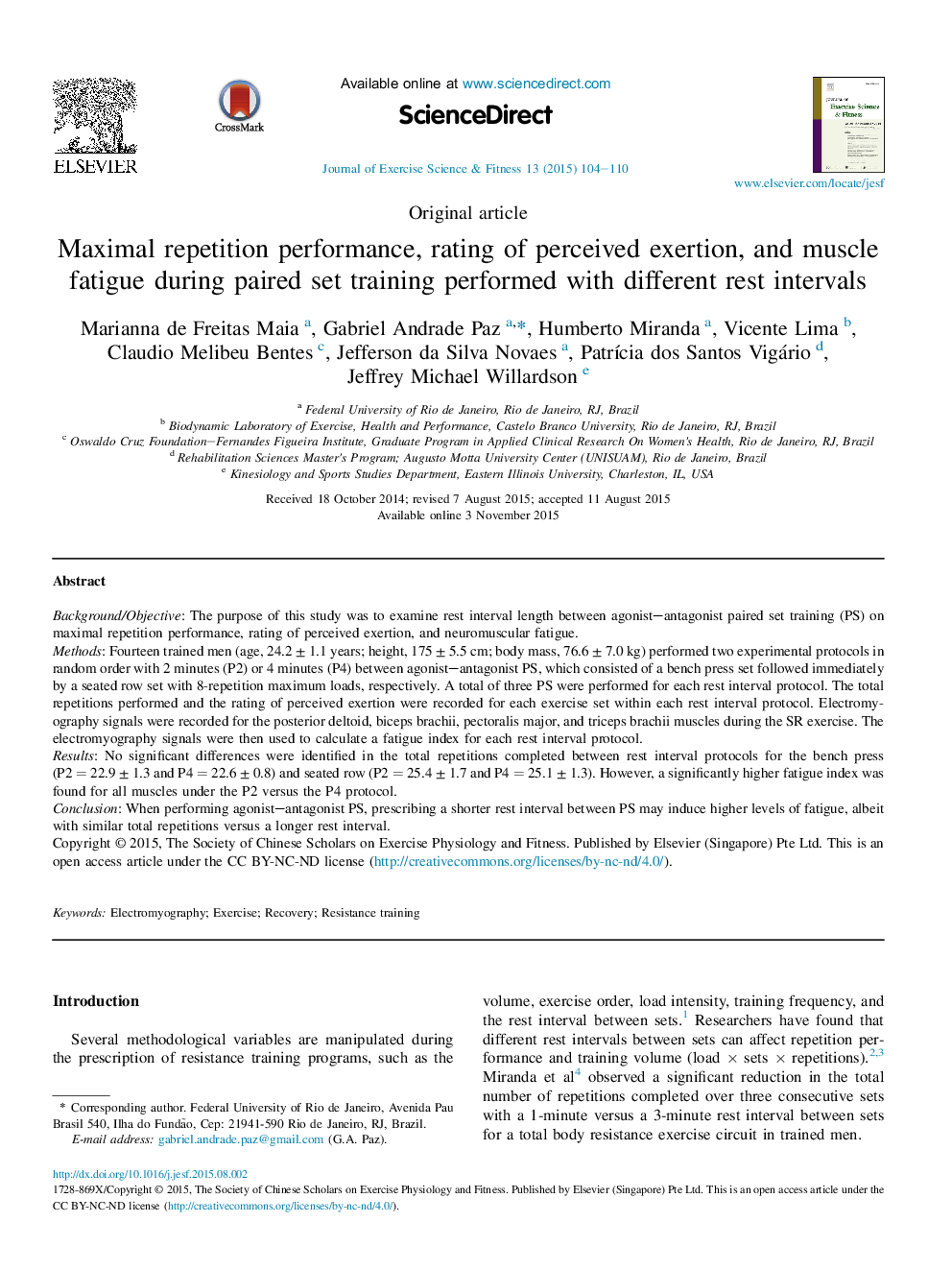| Article ID | Journal | Published Year | Pages | File Type |
|---|---|---|---|---|
| 2739604 | Journal of Exercise Science & Fitness | 2015 | 7 Pages |
Background/ObjectiveThe purpose of this study was to examine rest interval length between agonist–antagonist paired set training (PS) on maximal repetition performance, rating of perceived exertion, and neuromuscular fatigue.MethodsFourteen trained men (age, 24.2 ± 1.1 years; height, 175 ± 5.5 cm; body mass, 76.6 ± 7.0 kg) performed two experimental protocols in random order with 2 minutes (P2) or 4 minutes (P4) between agonist–antagonist PS, which consisted of a bench press set followed immediately by a seated row set with 8-repetition maximum loads, respectively. A total of three PS were performed for each rest interval protocol. The total repetitions performed and the rating of perceived exertion were recorded for each exercise set within each rest interval protocol. Electromyography signals were recorded for the posterior deltoid, biceps brachii, pectoralis major, and triceps brachii muscles during the SR exercise. The electromyography signals were then used to calculate a fatigue index for each rest interval protocol.ResultsNo significant differences were identified in the total repetitions completed between rest interval protocols for the bench press (P2 = 22.9 ± 1.3 and P4 = 22.6 ± 0.8) and seated row (P2 = 25.4 ± 1.7 and P4 = 25.1 ± 1.3). However, a significantly higher fatigue index was found for all muscles under the P2 versus the P4 protocol.ConclusionWhen performing agonist–antagonist PS, prescribing a shorter rest interval between PS may induce higher levels of fatigue, albeit with similar total repetitions versus a longer rest interval.
